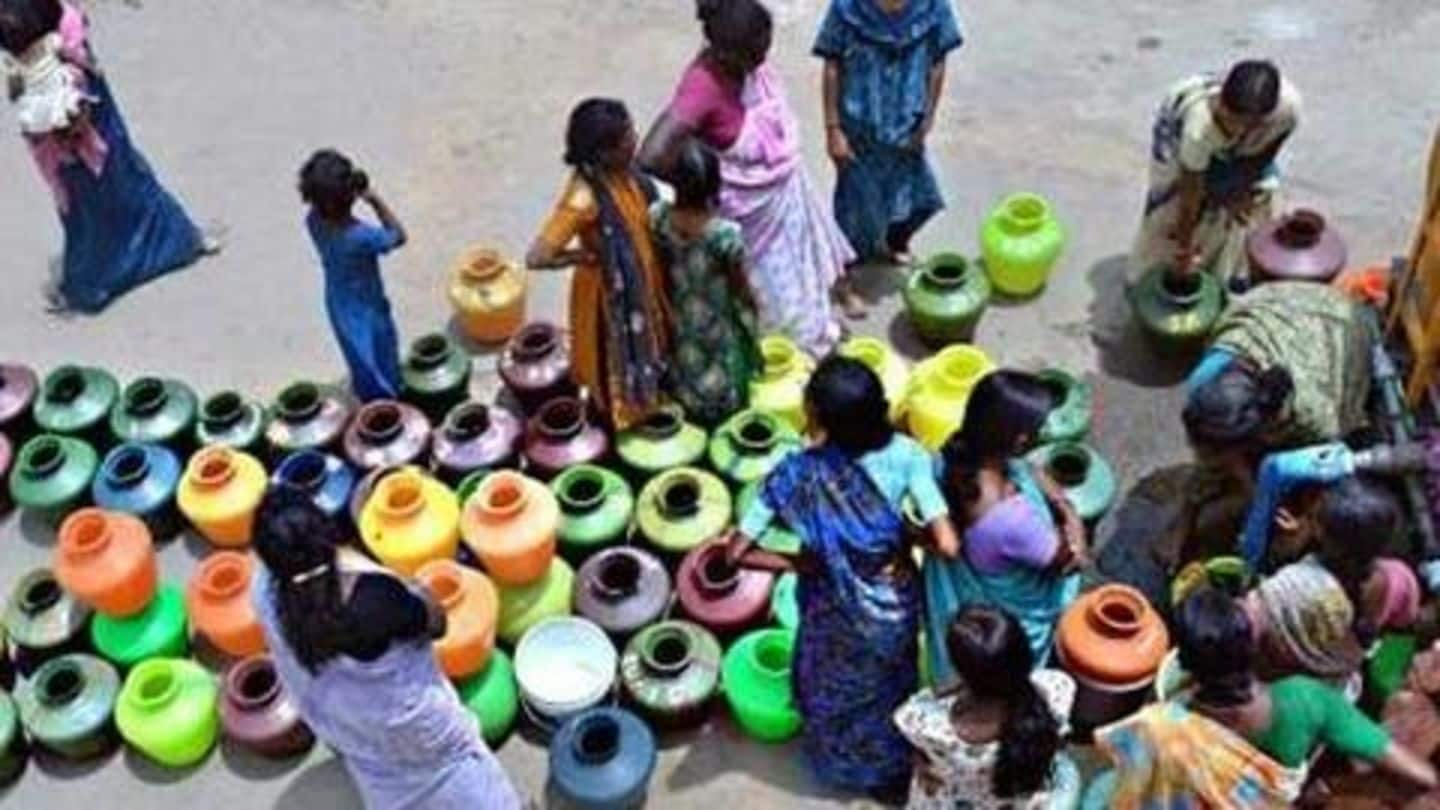
Conflicts over water on rise in Maharashtra, said experts
What's the story
Issues of unequal distribution, lack of planning, political interference and growing demand for water were giving rise to disputes among the different regions of Maharashtra, according to experts. Citing the lack of a state-level policy for water distribution and storage, Sanjay Lakhe Patil, president, Marathwada Backlog Removal and Development Forum, blamed politicians. "They have always invested heavily in their own areas," he claimed.
Blame
'Needs of the region never considered while sanctioning irrigation projects'
"Maximum dams have been constructed per hectare area, resulting in water imbalance and conflicts between different regions," Patil claimed. "Our water policy has always remained flawed. Needs of the region were never considered while sanctioning irrigation projects. Political leaders only thought about regions of their influence," he added. This comes after Maharashtra government recently declared drought in 151 out of the 353 talukas.
Example
Over expenditure on certain irrigation projects are causing problems: Patil
Backing his claim that needs of a region are not considered, Patil gave the example of the huge expenditure on Krishna Valley irrigation projects that resulted in water disparity in western Maharashtra. While Baramati, Kolhapur, parts of Satara, Sangli and Pune benefited, other areas like Sangola, Maan, parts of Satara, Sangli, Pune, Solapur and Atpadi remained without water, he pointed out.
Benefit or loss?
Part of Maharashtra benefits from irrigation projects, while others suffer
Lakhe Patil said the Tembhu-Takari irrigation project in Sangole, western Maharashtra, a perennially drought-prone area, is incomplete due to lack of funds. Similarly, additional water storage capacity dams built in the upper catchment areas of Jayakwadi Dam, he said, were against irrigation rules. "Additional storage capacity breaks the catchment water, which is meant for Jayakwadi, a place that doesn't get enough water," he claimed.
The order
Patil referred to Bombay HC order on equitable water distribution
In 2016, the Bombay HC passed a judgment regarding equitable water distribution and held that water is owned by the state and not any particular district, region, or personality. The Mendhegiri Committee set up by the state government laid down a formula on distribution of water from the upper catchment area dams in Ahmednagar and Nashik districts when Jayakwadi Dam faced scarcity, said Patil.
Action
Nashik authorities released water earlier this month into Jayakwadi Dam
The Vithalrao Vikhe Patil Sugar Factory and Mula Sugar Factory moved the Supreme Court against the release of water from these dams to Jayakwadi Dam but their plea was rejected by the apex court, said Patil. Following the SC order, Nashik authorities released water earlier this month into Jayakwadi Dam. Patil added that no efforts had been made to store water from west-flowing rivers.
Water conservation
No efforts made to store water from west-flowing rivers: Patil
90 thousand million cubic feet of water from rivers like Damanganga, Aurangiya, Ambika, Nar, Par goes into the Arabian Sea and no efforts had been made to store this water, said Patil. He added that Maharashtra Water Resources Regulatory Authority, with its chairperson being a retired Indian Administrative Officer with rank equivalent to the state Chief Secretary, had enough powers to tackle water conflicts.
Defense
Political interference hindered independent functioning of MWRRA
Ratnakar Mahajan, former vice chairman of the Maharashtra Planning Commission said the previous Congress-NCP government formulated a uniform water policy for the state through which it set up the Maharashtra Water Resources Regulatory Authority (MWRRA). But, he said, the authority could not function independently while taking decisions on water distribution for drinking and agricultural purposes due to political interference.
Demands
Sangola farmers demand water release from Tembhu lift irrigation project
Apart from the water conflict related to Jayakwadi Dam, Farmers in Sangola, a perennially drought-prone taluka in Solapur district, are demanding that water be released from the Tembhu lift irrigation project on the Krishna river. They have alleged that water is not being released to them from upstream regions of Sangli and Satara due to the political pressure.
Crops issue
Dindori's farmers claim lack of water affecting crop growth
In Nashik district's Dindori taluka, farmers claim the quantity of their produce has declined as water from the east-flowing rivers in the district's western talukas is getting over before the crops gained strength. Farmers from Kalwan taluka of same district don't want water from the Chankapur dam, across the Girna river, to be released to Malegaon and Chandwad and, further, to Marathwada.
Reason
Drinking water needs rising because of rapid urbanization, claims experts
Officials said despite the general belief that there was plenty of water in the upper parts of the Godavari Basin, drinking water needs had grown tremendously due to rapid urbanization among other aspects. There are 23 dams in the Godavari and Tapi basins, but put together, their capacity is less than 50% of that of Jayakwadi, the officials noted.
Suggestion
Economist terms present situation 'a plunder of groundwater levels'
Economist H M Desarda attributed the present situation to what he claimed was a plunder of groundwater levels. "The groundwater bank is in negative balance and depleted due to excessive pumping. There is a need for a holistic programme for rainwater harvesting. Rainwater needs to be replenished in the soil and vegetation," he said. Desarda also called for water literacy among policymakers and society.